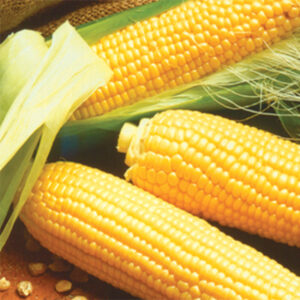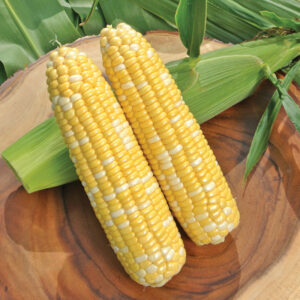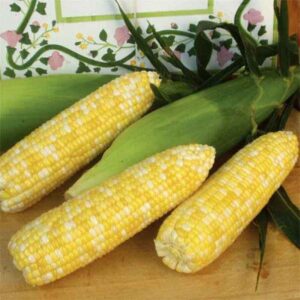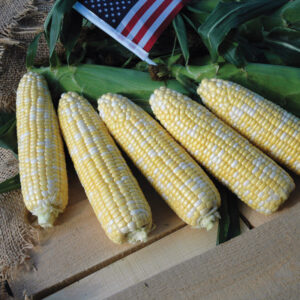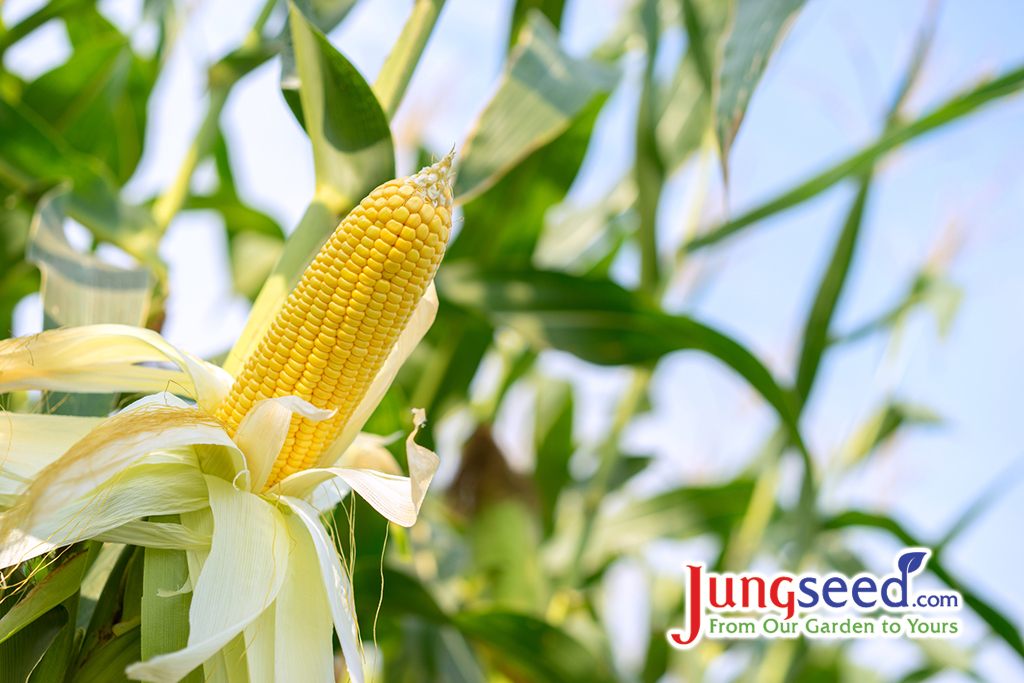
One of the highlights of summer is eating fresh sweet corn. Sweet corn hybridizers are constantly striving to develop varieties with improved flavor, seed germination, holding ability, and other desirable characteristics.
Types of Sweet Corn
Varieties of sweet corn are classified based on the type of sweetness genes they contain. The special characteristics of each class of sweet corn will appeal to different growers for different reasons. Different sweetness genes provide different levels of sweetness and flavor to each kernel, and each type has some specific isolation requirements to ensure high quality and flavor. Isolation can be achieved by physical space or by staggering planting times. Here are basic descriptions of all the different types.
Normal Sugar (su) Corn Varieties
These are the old-fashioned corn varieties that have a limited shelf life. You have to pick them and eat them right away or their sugar will be converted to starch. (Note that freezing stops the conversion process, so freezing right after picking will prevent sugar loss). They offer traditional corn flavor, but the old saying about having the water boiling before you pick sweet corn is quite apt when growing su sweet corn. Backyard and hobby growers love su sweet corn for it’s “down-home”, classic sweet corn flavor.
Sugary Enhanced (se and se+) Corn Varieties
Sugary enhanced varieties have increased sweetness compared to normal Sugary types. Because sugar levels are higher than su varieties, the sugar is more stable and kernels retain their sweetness longer than su types. These se and se+ varieties also have more of a “corn” flavor than sh2 types and the kernels have a creamier texture than sh2 types. Because the kernels are softer and more tender they are more apt to bruising when picked. Handle with more care during harvest to prevent serious damage. Farmers’ market growers and backyard growers appreciate the longer lasting sweetness combined with their classic corn flavor of the sugary enhanced types. Many se varieties offer the lowest number of days to maturity as well.
Supersweet (sh2) Corn Varieties
Supersweet varieties contain the “shrunken” (sh2) gene that increases sugar levels and greatly slows the conversion of sugar to starch. These varieties have the sweetest flavor and the longest shelf life of any type of sweet corn. Supersweet ears have kernels that are crisp and juicy in texture. All types of growers can take advantage of sh2 varieties, but rules for planting are a bit different.
Because they contain so much sugar and so little starch, the seed of sh2 varieties is smaller than the seed of other types of sweet corn, and it appears wrinkled and shrunken, hence the name. Because of the reduced carbohydrates within each seed, their reserves to fuel germination is lessened. As mentioned, these sh2 varieties should be planted only when soil temperatures have warmed to at least 60° F and at a shallower depth, to ensure positive results.
SSW Corn Varieties
SSW, or SuperSeedWare, varieties are a new, patented type of sh2 corn that provides all the eating quality benefits of sh2 without the poor germination and seedling vigor. Essentially, the SSW varieties switch off the sh2 genes as the kernels dry, resulting in fuller, less shrunken kernels that germinate better even with cool soil temperatures.
Synergistic Corn Hybrids
Synergistics are also newer varieties that combine both supersweet (sh2) and sugary enhanced (se) kernels in every ear. This provides the benefit of improved sweetness and shelf life combined with the flavor and tenderness of sugary enhanced genes. Usually, 25% of the kernels are supersweet and 75% are sugary enhanced, though this can vary among varieties.
Augmented Corn Hybrids
Augmented types are similar to synergistic varieties, as they contain both sh2 and se kernels. Unlike synergistic types, all the kernels on the ears contain both sh2 and se genes. This gives them the sweetness of supersweet varieties combined with the tender texture and good flavor of sugary enhanced types.
All of these more modern hybrids have excellent flavor and texture qualities enjoyed by all kinds of growers. Some offer good cold soil germinations while others perform better with warmer conditions, but there are so many good options, look for the one that best suits your needs.
Sweet Corn Isolation Guidelines

To grow the best quality sweet corn, there are some basics you should know about sweet corn pollination. Planting the wrong types of corn together can result in tough, starchy kernels instead of the expected sweet, tender ears.
First, all types of sweet corn need isolation from all types of field corn, ornamental corn, and popcorn to avoid starchy kernels and poor flavor.
Normal (su) and sugary enhanced (se and se+) varieties can be grown side by side, without isolation. You can also plant more than one su variety or more than one se variety without isolation.
Supersweet (sh2) varieties should be isolated from all types of sweet corn other than augmented varieties. You can plant more than one sh2 variety side by side, and SSW varieties can be grown with supersweet varieties without a problem.
Synergistic (sh2 / se) varieties should be isolated from supersweet (sh2) varieties and other synergistic varieties.
Augmented (sh2 + se) varieties need isolation from all except sh2 types and other augmented varieties.

Isolation Methods
Isolation can be accomplished either through spacing or through timing. In garden settings, space non-compatible varieties at least 25 feet from other corns in the garden. For larger plantings (acre-sized and larger), isolate incompatible varieties by at least 200 feet. For fields larger than 20 ac. 8 to 16 border rows may be removed at harvest, to ensure the best quality from the rest of the field. In general, larger isolation distances are beneficial and help to ensure there is no unwanted cross-pollination.
Isolation can also be accomplished in time by planting varieties that mature 14 days or more apart. This helps to ensure that no pollen from incompatible varieties is present while another variety is producing silks.
Germination Temperatures

All sweet corn requires warm soil temperatures for good germination. For all types other than supersweet (sh2) varieties, the soil should be at least 55 degrees F before planting to ensure good germination. For untreated supersweet (sh2) seed, plant only after soils reach 65 to 70 degrees F. Treated supersweet (sh2) seed can be planted once the soil temperature is at least 60 degrees F, but as mentioned, planting depth should be ½ to 1 in. shallower in most soils.
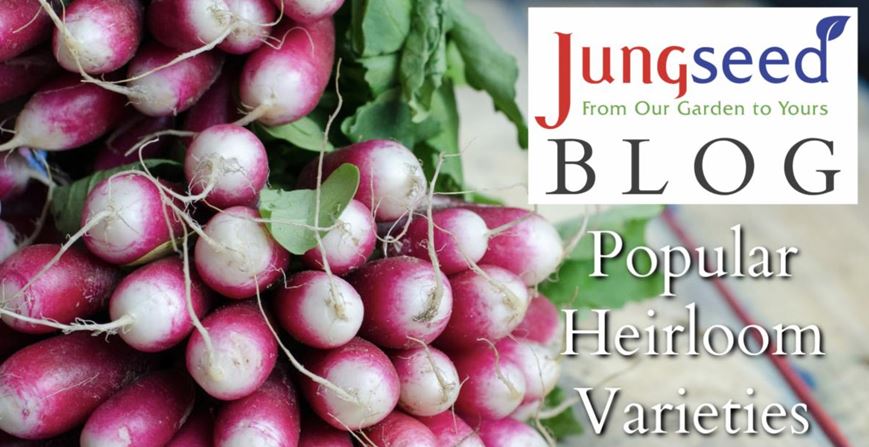
Get your garden started, with our gardening tips and growing guides.
With so many sweet corn varieties to choose from, selecting one can be difficult. Rest assured that all the varieties Jung Seed carries are delicious when picked at the right time and grown using proper isolation guidelines. All of our products are non-GMO and come with Jung Guarantee.

